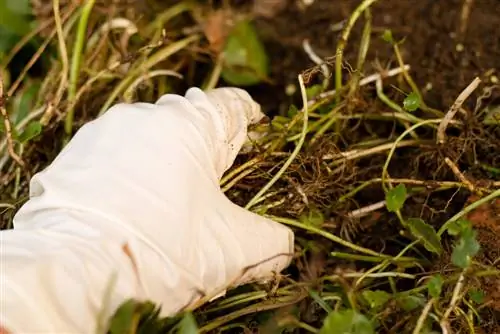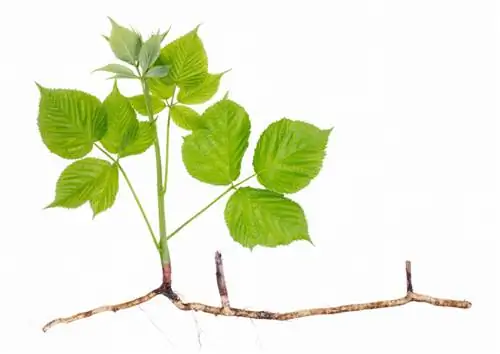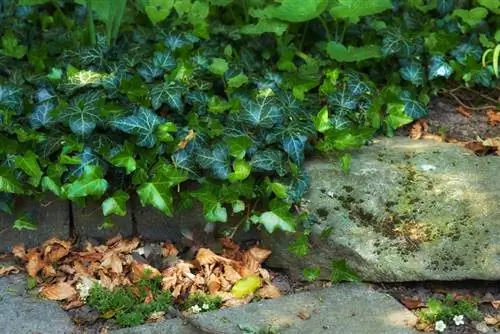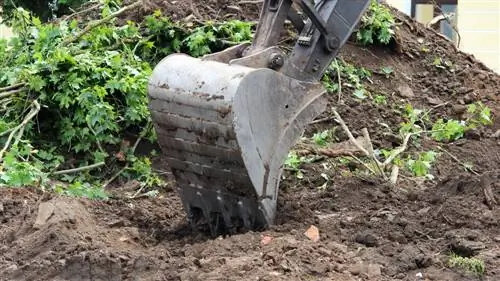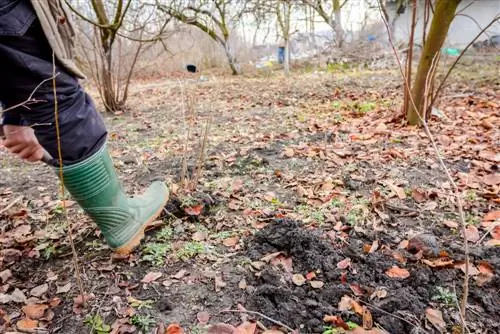- Author admin [email protected].
- Public 2023-12-16 16:46.
- Last modified 2025-01-23 11:21.
Ground cover plants are popular, easy-care surface ornaments - but sometimes they can also be annoying. And not just in terms of appearance and growth, but also in terms of removal. Read below to find out how to get to the root of the problem.
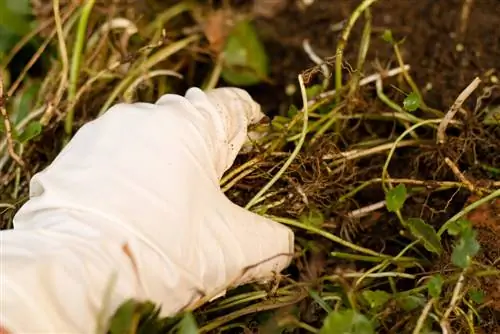
How do you remove ground cover roots?
To effectively remove ground cover roots, first cut off the above-ground shoots, then loosen the soil with a digging fork, carefully pull out the root strands and dispose of the plant remains in the organic waste bin. In an emergency, a herbicide can be used.
When ground cover plants become too stubborn
Ground cover plants are all too popular as weed controllers - after all, many have very dense, shading and impenetrable properties that are perfect for suppressing weed growth. But it is precisely these properties that can become a problem if the ground cover has to be removed - there can be various reasons for this, for example:
- It is increasingly starting to spread to neighboring beds
- he is simply no longer attractive due to lack of care and age
- the area should be redesigned
Especially with the ground cover plants that provide particularly good coverage, removal including the roots is of course not easy. Their growth is often densely branched and omnipresent in the soil through above- or underground runner systems. In addition, runner systems ensure that even the smallest plant residues that are overlooked during removal sprout again undeterred and fresh and vital.
Removing roots from tough ground cover plants
Ivy in particular is particularly dominant, even desperate to survive. Using his example, we want to go through ground cover root removal. Ivy forms a strong network of runners that is also equipped with adherent roots - this poses a strong risk of re-germination.
Dig up thoroughly and with as few pieces as possible
After you have cut off the above-ground shoots and pulled out thin tendrils by hand, you should dig up the root system as thoroughly as possible. The best way to do this is to take a digging fork (€31.00 on Amazon) and loosen the soil in order to get the root strands out in one piece if possible. Rough dismemberment using a spade or even a motor hoe leaves too many root residues in the soil that can germinate again.
A tip: water the soil before digging so that it becomes softer and the roots are easier to pull out.
Plant residues in the bin
So that you don't get the ivy again elsewhere in the garden, dispose of the plant residues in the organic waste bin - and not on the compost. Here even seemingly dead shoots and root remnants can easily come back to life.
In case of emergency: herbicide
If you can't get through the roots at all, you can also use a herbicide - but this should only be an emergency solution out of consideration for the environment and your immediate garden biotope.

